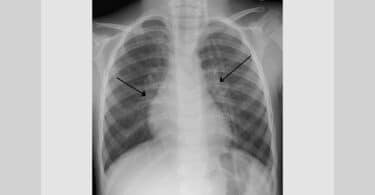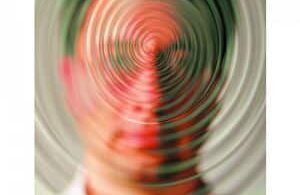A Case of Irregular Heart Action – Dr. C. E. Sanford
This is the case of a woman, aged forty years, of lymphatico-bilious temperament. She had been unable to lie down for nearly two years. The least exertion made it almost impossible for her to breathe. She had been under the care of eminent physicians who considered her incurable. The one last called refused even to prescribe, stating to the friends that medicine could do her no good. Dr. Sanford found, upon examination, great irregularity of the heart’s action— intermittent at times and of varying character — great frequency of action, alternating with slowness. He called it enlargement of the left ventricle, with extreme irritability of the cardiac nerves. Cactus was prescribed , a dose every hour, until there should be some relief; then with lengthened intervals, as the alarming symptoms yielded. The patient was relieved after two doses, and the following night slept quietly in bed. In one week from the first visit “she did washing and other household work.” She has had no recurrence of the heart troubles since. Dr. Sanford has also successfully prescribed Cactus in cases of irregular action of the heart through sympathy, in enlargement of the heart, and in valvular diseases. One case of palpitation, accompanied with vertigo, dyspnoea, and almost complete loss of consciousness, has been entirely cured by the use of Cactus.
A Case of Cardiac Dropsy – Dr. E. J. Morgan
Mrs. B — a lady aged sixty years, was attacked on the first day of July, 1878, with violent palpitation of the heart, accompanied with very distressing dyspnoea. Upon examination I found evidence of structural change of the mitral valves, with regurgitation, and congestion of the lungs. These symptoms continued two weeks, when general dropsy supervened. At this juncture I gave an unfavorable prognosis, and commenced a course of treatment, looking more for palliation than a cure. The breathing became more and more labored, and it was impossible for the patient to assume the recumbent position. Two weeks later the extremities became edematous. I succeeded in relieving the effusion temporarily with large doses of Indian Hemp and Digitalis. But very soon the dropsical symptoms increased, with an aggravation of all the distressing symptoms. I then gave the most powerful drastic cathartics and diuretics, until the bowels and kidneys utterly failed to respond to any of them, whereupon I advised my patient to “ set her house in order,” expecting at every subsequent visit to see what physicians are so often compelled to meet, viz., crape on the door.
At this time, while visiting another patient, I was asked to see a cactus in bloom. The flower was given me, and from it I prepared a tincture and gave my patient four drops every three hours, which decidedly aggravated her symptoms. I then gave the third decimal dilution, with slight amelioration only. Following that I gave the 20th dilution, and it was like “throwing water on fire.” It “is now the 1st of October, and my patient is well. During three months’ treatment the Cactus was the first drug that restored the bowels and kidneys to a healthy action. Every vestige of the dropsy has disappeared. The regurgitation has ceased, and there are no abnormal symptoms remaining, except slight valvular murmur.
Mitral Insufficiency – Dr. H. S. Ostrom.
During the winter of 1873-74, Jane B., age thirteen years, was the subject of a severe attack of inflammatory rheumatism, which involved the large joints of the body. She was treated in accordance with the most approved methods of the allopathic school, and — lived. When she came under my care, the succeeding spring, her condition was as follows : Complexion livid ; face sunken, with dark rings around the eyes; an expression indicating suffering; breathing difficult, increased to a most distressing degree by exertion, especially that of ascending a flight of stairs, fretful, irritable, sad, disposed to weep, could not lie on the left side, didn’t sleep well the first part of the night, appetite not good, almost constant pain, of a darting, cutting character, extending from the region of the heart, along the outer border of the great pectoral muscle to the left shoulder down the arm to the elbow. Se was aggravated in damp weather and by any emotion ; action of the heart much accelerated, and so violent that it could be seen through her clothing; an intermission every second ‘beat ; pulse and heart not synchronous ; right ventricle enlarged ; increased second tick of the pulmonary artery; loud regurgitation noise heard during the second sound of the heart at the apex. The case presented a clear picture of the insufficiency of the mitral valves, and my prognosis was consequently guarded. I gave Rhus tox. 200, with very transient relief. More happy effects followed the use of Kalmia lat. 200. Finally I gave Cactus g. 200. After two doses, given with an interval of twenty-four hours, the pain was permanently relieved. The action of the heart somewhat reduced; the valvular regurgitation not so prominent; breathing easier. Appetite and sleep better. Indeed, a general improvement was apparent. Though the child remains delicate, and the action of her heart abnormal, she does not suffer, but enjoys comparatively good health.
Chest Pain and Palpitation – Dr. William Bayes.
Miss P., twenty-two, consulted me on July 24, for pain in the left breast, extending over the whole left side of the chest, both in front and behind, extending down the left arm. She attributed these symptoms to a severe sprain of the arm two years before. Since this date she has at times suffered from fluttering and palpitation of the heart, but it has been getting worse during the past six or eight months. She wakes with this palpitation every morning. Walking or any exertion brings on this palpitation, with shortness of breathing. She is fearful lest there should be any disease in the breast.
The left breast is larger than the right, but there is no tumor, nor any sign of disease in the breast. The lung sounds are normal, but the heart is enlarged, and the bruit de soufflet well marked. The patient has the bright red mucous membrane so frequently seen in heart disease. Her “alae nasi” have the fan-like action, which Dr. Wilson says, in all circumstances, indicates Lycopodium. As many of the other symptoms indicated that remedy, I prescribed Lycopodium 6th, twice a day, and Lycopodium 30th every night. July 26th She was no better, the pain in the shoulder was more severe, and she was unable to make any exertion. I then ordered her Cactus grand 1, a drop three times a day. July 30th. The Cactus immediately gave some relief to the heart, so that the next day she could walk with greater ease, but the pain above and especially below the left breast was still severe. Ordered her to continue Cactus 1, three times a day, and to take a drop of Cimicifuga every three or four hours, when the pain is violent. Sept. 4. The patient can walk two miles without fatigue, the pain in the left arm is cured. The bruit de soufflet is no longer to be heard. She still has pain in the left shoulder and left side, but it is decidedly less. She has had very little occasion to use the Cimicifuga. She has lost the palpitations, and is able to resume her household and other duties without inconvenience. Ordered her to take the Cactus again, twice a day if the symptoms recur, but if she remains free from the heart symptoms, I advised her to omit the Cactus. If the pains in the left side should prove troublesome I ordered her to take Aconite 1st centesimal.
I have also seen Cactus of great service in a case of disease of the mitral valves, with great distress of breathing, especially in cold weather, with blue lips and bluish nose. In this case the patient regained her walking powers and lost her shortness of breath under a course of Cactus. She will never be well, but she has recovered a state of health which enables her to enjoy life.
Excerpted from: Clinical Therapeutics Vol II Temple S. Hoyne, A. M., M. D.






